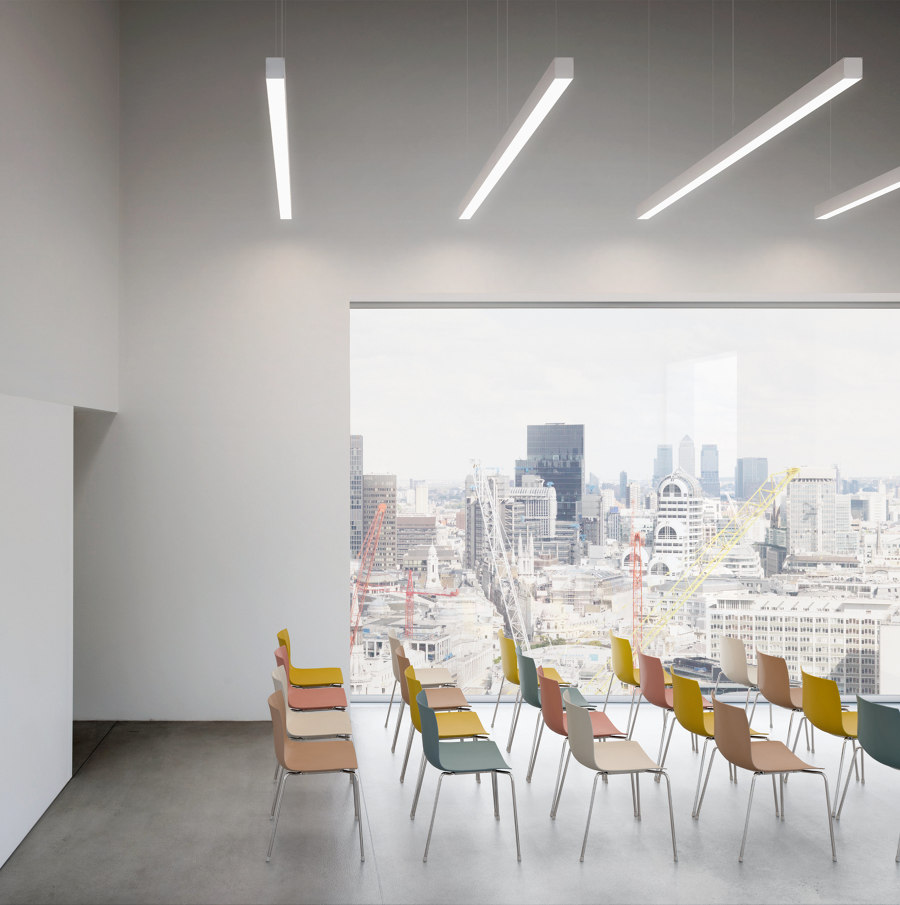Setting the tone: Arper
Brand story by Emma Moore
22.06.21
In a new report by Arper, the Italian furniture brand explores its relationship with colour, an element which, for them, is as integral to design as form or function.
Arper collaborator Jeannette Alther has defined the different personalities within the Catifa family of chairs using distinct colour palettes and textures. Pictured here, the playful pastels of Catifa 46. Photo: Marco Covi and RNDR Studio

Arper collaborator Jeannette Alther has defined the different personalities within the Catifa family of chairs using distinct colour palettes and textures. Pictured here, the playful pastels of Catifa 46. Photo: Marco Covi and RNDR Studio
×The relationship between colour and design has history. After Bauhaus fed us black and chrome, along came Le Corbusier to warm up its industrial tones with his Architectural Polychromy system of nuanced complementary colours for walls and floors. When the 1970s polarised palettes towards Coppertone, Memphis moved in to bedazzle with jewel-like hues and cacophonous patterns. All to be pushed aside again for 90s minimalism. Modernism’s love of natural, material tones has made monochrome the palette of stylish modern restraint. And when we tire of it, chromatic comfort is never far away, waiting to reassert itself.
For some though, colour is a constant. Cutting through the chromatic vacillations is Arper, founded in 1989 with the mission to create furniture for work, home and community. It sees colour as equally integral to design as form, material and function, playing a vital part in shaping the human experience that drives the brand’s practice.
Office design now leans not only on function but on empathetic considerations such as colour. Kinesit features bold colours used in a considered way, while Cila joins clay tones with an enveloping form. Photos: Slava Lopez (top), Iris Humm (above)

Office design now leans not only on function but on empathetic considerations such as colour. Kinesit features bold colours used in a considered way, while Cila joins clay tones with an enveloping form. Photos: Slava Lopez (top), Iris Humm (above)
×To unpack its long and evolving relationship with colour, the company has compiled a study exploring its findings over the years. ‘Colour itself doesn’t change, but we do,’ it reports, reflecting on the historical to-ing and fro-ing and on how Arper routinely interrogates the way shape and colour combine to impact emotions, curate atmosphere, shape moods, enhance wellbeing, and draw us closer to nature. ‘As much as culture and time affect how we perceive colour emotionally, colour also interacts with the personality of the object.’
The quality of our spaces is governed by material and architecture but also colour, or ‘soft tech’, which Arper defines as the innovation and technology in the service of the body and mind. Photo: Salva Lopez

The quality of our spaces is governed by material and architecture but also colour, or ‘soft tech’, which Arper defines as the innovation and technology in the service of the body and mind. Photo: Salva Lopez
×The power of colour is witnessed in the original Catifa chair, which featured rich shades on its back surface to impart character, while white on the inside to bring a sense of serenity and clarity to a setting, and in the newly launched Mixu with its mixable shades categorised by the mood they portray. The palette, the combinations, and where and how colour is used might have changed along the way, but pigment remains an essential ingredient in Arper’s design cocktail.
© Architonic




